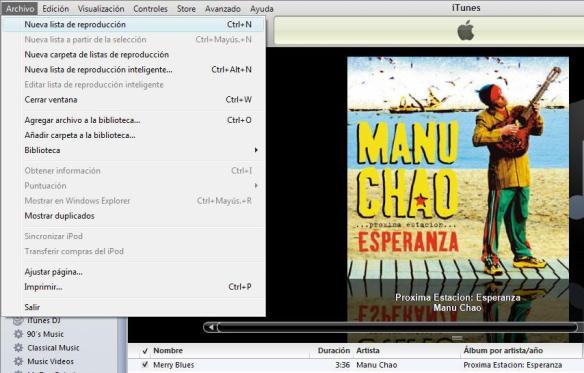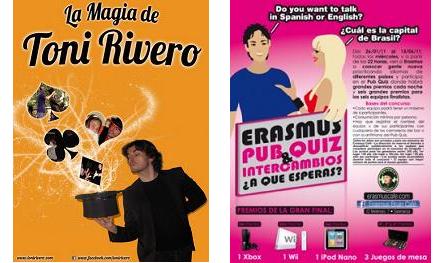Learning a language should be fun and engaging! It doesn’t have to be something you dread and fear. You don’t have to always sit in the corner of your room and stare at a black and white list of vocabulary words. Immerse yourself into the world of Spanish. You need to get up and be active (or as you will see below, relax and watch a movie). When learning a language, you are entering a whole new world and culture that wasn’t available to you before so get excited!!
There are many theories and studies out there to help you study/learn better. They study how the brain works, learning styles and give ways to increase your memory. Many of them involve using all of your senses and associations to burn the information in your brain. Putting a lot of these theories into practice like they are below can make learning Spanish a lot of fun no matter if you are a kinesthetic, visual, or auditory learner. Without further adou
1. Immersion – There is no better way to learn a language…period! So go ahead and start packing your bags and get on the next international flight out of town. Being surrounded by the language and culture 24/7 is the quickest and most fun way to learn a language. It’s one thing to stare at a computer screen with a picture of an an apple and the word manzana, it’s another thing to go to a fruit market abroad and try to negotiate a better price on 10 manzanas. It’s one thing to see a picture of a salsa dancer to try and learn the verb bailar…it’s another thing to sign up for and shake your hips in salsa classes that are completely in Spanish. The phrase “cruza por ahí, cruza por allá“ will be forever burned in your head. For help planning an immersion experience, contact me at ian.suber(@)donquijote.org!
.
2. Fall in Love – There is a funny Spanish saying about the best way to learn a Spanish, “…en la cuna y en la cama” (in the cradle and in the bed). Seems that every time I see or hear about someone increasing their Spanish-speaking ability in a short amount of time it always invovles a little motivation and help from someone of the opposite sex. People do crazy things and find motivation for love. Dating and falling in love with someone is a great way to take your Spanish to the next level. It allows you to practice your Spanish with someone in a comfortable environment. You will not be as shy to make mistakes with someone who cares about you. This person will also be willing to fight through your broken Spanish and rough accent to help you get better…they may even find it to be cute.

Photo by OD Rangel
You will spend a lot of time texting love messages and visiting sites so you will want to have a deeper conversation than “Tienes hambre?” If you work up the courage to approach that cute local you’ve had your eye on, you will be motivated to have a conversation better than, “Hola, me llamo ____. Cómo estás?”…panic panic, what do you say now, what else have you learned in Spanish class…”Hace buen tiempo, no?“…nooo, the dreaded weather talk! Dating a local is not only a good idea because it brings you into the heart of a culture and allows you experience things tourists don’t…it actually makes you a more motivated student in class. You will probably find yourself pressing your teacher for new things to say every day. So relax and let Cupid help you take your Spanish to the next level.
P.S. Instead of asking that cute local what they think about the weather, maybe something like this will work…”Creo que he perdido mi número de teléfono..crees que me puedas dar el tuyo?” 😉
.
3. Flashcards – But these aren’t your grandma’s white 3 x 5 notecards. I’m talking about 21st century flashcards…flashcards of the future with video, photos, and audio! With your computers and smartphones you can use websites like Quizlet.com to create a custom list of words that you want to learn. The next time you are stuck at the airport because of a delayed flight or riding the bus/metro, instead of playing Angry Birds, bust out these 21st century flashcards and have fun learning a few new words. And while you are at it, don’t be shy and read them quietly…read them out loud to help you remember them. Review them while walking around to ramp up your motor activity which can also help increase the probability they will be able to be recalled. Be creative…find fun and wild photos that will help burn the words into your brain.
.
4. Gossip magazines – No one likes to admit they read them and if they do, it’s only because they were staring back at them while standing in the check out line or they were the only magazines at the dentist’s office. If you want to learn a little of the slang and inside jokes/expressions, stuff you may hear if you are eavesdropping on locals speaking to each other, pick up the latest celebrity magazines and enjoy learning Spanish while learning about who Sergio Ramos is currently dating, what outfit the princess wore, and Operación Biquini!
.
5. Watch TV/Movies – Now this may be one of the most fun and easiest ones to do. You have already watched every fight and grenade on Jersey Shore and can recite every line in the 15 Harry Potter movies, so now re-watch them in Spanish! All DVDs have Spanish language options and most cable operators also have the options to turn on Spanish subtitles or dubs. If watching your favorite TV shows and movies completely in Spanish seems like a daunting task, to get your feet wet you can start with the subtitles in Spanish. Then advance to Spanish subtitles with Spanish audio and finally graduate to only Spanish audio without subtitles. Have fun learning Spanish. You can learn quicker when you use multiple senses at the same time. Watching the movie Knowing with Nicolas Cage with Spanish subtitles burned the word ‘grita’ in my memory and it’s one I’ll never forget. I was seeing the action/movement, hearing the actors screaming, and seeing the word pop up a bunch of times in the movie. My brain was able to associate that word with a lot different senses at the same time. GRITA!
.
6. Music – Awaken the inner karaoke lover insider yourself and sing along in Spanish. Download the lyrics (letras) to your iPhone and sing along. There are tons of websites with lyrics which you can copy and paste into your songs in itunes..which then appear in your smart phone. Often times the romantic songs are the slowest which makes it easier for you to sing and dance along to them. Look up Luis Miguel and Julio Iglesias for some easy songs to sing along to. Once you have perfected a few of those, you can try to keep up with the fastest Spanish rapper in the world!
.
7. Settings – Hmmm, what does this mean? The beauty about using technology is that you can now change the language setting to almost any language imaginable..from Suomi to ייִדיש to íslenskur to русский to Spanish! So whatever piece of electronics or software you are using, change the language to Spanish. I’m talking about the language for your computer, Facebook, iTunes, iPhone, LinkedIn, MySpace (if you are one of the 150 diehards that still use it), television, DVDs, and if you don’t mind getting lost every now and then, even your Tom Tom/GPS device. No more locking yourself in the library to study long lists of words. Watch your Spanish vocabulary grow in a more natural setting. At first it may make you want to pull your hair out or cry, but before you know it you will be actualizando your iPhone and changing the ajustes with ease.
.
8. Be active! – If you are doing an immersion experience…do just that. Immerse yourself! Read local university newspapers to find out what is going on and ways to be involved. Reading a university newspaper is also a great way to find out where the locals your age are hanging out. The more experiences you can take part in the better. Many local bars and cafes host intercambio nights which allow you to practice your Spanish with a local trying to learn another language. You can even go to things like magic shows where if you don’t follow along completely with what the magician is saying, you can still enjoy seeing someone being cut in half…just try to hide when the magician goes around looking for volunteers.
If you are the sports type, join local gyms (great place to meet local guys while burning calories) or take yoga classes (great place to meet local girls while improving your ability to touch your toes). Join a pickup game of soccer. You can probably find one at any park. Become a regular at a tapas bar or cafe and practice your Spanish with the bartenders and other locals…don’t be surprised if after a while you get free shots or extra wine in your wine glasses. Don’t get stuck in your room skyping with family and friends the whole time you are doing your immersion experience. Send postcards like your parents used to do or save the wild and crazy stories for when you get back.
.
9. Learn English! – I’m serious. 🙂 It’s estimated that the Spanish language has about half the words as English. So if you learn a little bit of the English language, you will actually be learning Spanish words at the same time since there are lots of cognates. Many words in both languages are spelled the same but just pronounced differently. ex: hotel, vulgar, color, chocolate. There are also many words that are essentially the same, but there are slight variations. ex: changing -ist to ista…artist-artista, finalist-finalista. You can also change words that end in -ity to -idad. ex: creativity-creatividad, university-universidad. If you are a month away from leaving for your Spanish Immersion experience abroad, you can bust out this quick study guide that says it will teach you 3013 Spanish words in 31 days by learning some English-Spanish tips like the ones above. It looks simple. (what’s the Spanish word for simple?)
10. Help! – So 10-100 I will leave up to you. What are some great ways you have improved your Spanish without staring at a textbook? Did Cupid find you?







